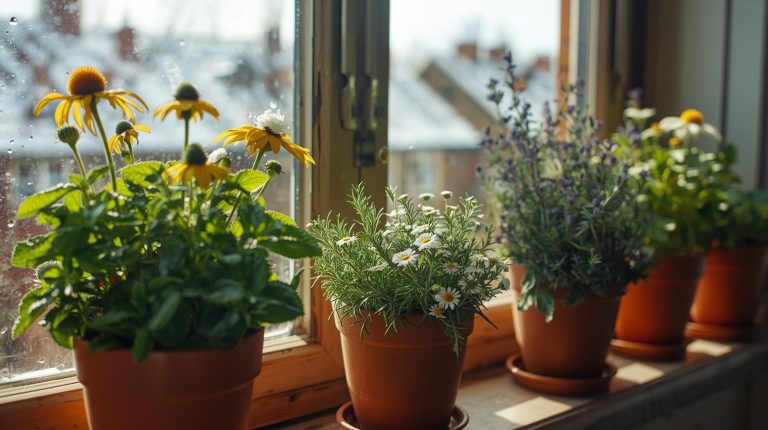Welcome to the world of healing and connection through Ayurvedic plants. Picture yourself surrounded by the soothing greens and vibrant hues of your own homegrown garden, filled with medicinal treasures.
In this guide, we will embark on a journey together, discovering the ancient wisdom of Ayurveda and how to cultivate these sacred plants in your own space.
Get ready to nurture your body, mind, and soul as we explore the power of Ayurvedic plants and integrate them into your holistic wellness routine.
Understanding Ayurvedic Medicinal Plants
To understand Ayurvedic medicinal plants, you must delve into their therapeutic properties and potential benefits. Ayurveda, an ancient holistic healing system, recognizes the power of plants in promoting overall well-being and restoring balance to the body, mind, and spirit.
Ayurvedic plant identification is a vital aspect of this practice, as it allows you to identify the specific plants that align with your unique constitution and health needs. Each plant possesses its own set of qualities and energy, which can be harnessed for various purposes.
Ayurvedic plant uses range from promoting digestion and boosting immunity to soothing inflammation and calming the mind.
Benefits of Growing Ayurvedic Plants at Home
By growing Ayurvedic plants at home, you can enjoy a multitude of benefits that support your overall well-being and enhance your connection to nature. The importance of growing these plants lies in the numerous advantages they offer.
Firstly, Ayurvedic plants are known for their healing properties, allowing you to cultivate a natural remedy garden right in your backyard. This means you have easy access to plants that can aid in digestion, reduce stress, and promote better sleep.
Secondly, growing Ayurvedic plants at home allows you to have control over the quality and purity of the herbs you use. You can ensure that they’re free from harmful pesticides and chemicals, making them safe and effective for consumption.
Lastly, tending to these plants fosters a sense of connection with nature, providing a peaceful sanctuary where you can find solace and belonging.
Essential Ayurvedic Plants for Healing
Start cultivating healing in your home by incorporating essential Ayurvedic plants into your garden. These plants have been used for centuries in traditional medicine and are known for their powerful healing properties.
One essential Ayurvedic plant is Tulsi, also known as Holy Basil. It’s revered for its ability to boost the immune system and promote overall well-being. Another essential plant is Ashwagandha, which is known for its adaptogenic properties, helping to reduce stress and anxiety.
Brahmi, a small creeping herb, is highly regarded for its ability to improve cognitive function and memory. Lastly, Neem, a versatile plant, is used in herbal remedies for its antibacterial, antifungal, and antiviral properties.
Tips for Cultivating Ayurvedic Medicinal Plants
One important tip for cultivating Ayurvedic medicinal plants is to ensure proper sunlight and water requirements are met. Ayurvedic plants thrive in natural sunlight, so it’s important to place them in a location where they can receive at least 6-8 hours of sunlight each day.
Additionally, be mindful of their water needs. Most Ayurvedic plants require regular watering, but it’s important not to overwater them as it can lead to root rot. Find a balance by checking the soil moisture regularly and watering when the top inch of soil feels dry.
When it comes to cultivating techniques, it’s beneficial to use organic fertilizers and compost to nourish the plants and promote their growth.
Lastly, be aware of common obstacles such as pests and diseases. Regularly inspect your plants and take necessary measures to protect them, such as using natural pest repellents or implementing companion planting.
Integrating Ayurvedic Plants Into Your Wellness Routine
To incorporate Ayurvedic plants into your wellness routine, it’s essential to understand their medicinal properties and how they can support your overall health and well-being. Integrating herbal remedies into your daily life is a powerful way to nurture your body, mind, and spirit.
Begin by identifying the specific health concerns you wish to address, such as digestive issues, stress, or sleep disturbances. Research which Ayurvedic plants are known to alleviate these ailments and incorporate them into your routine.
You can create herbal infusions, teas, or even use them topically in the form of oils or creams. By incorporating natural healing into your daily rituals, you’re embracing the wisdom of ancient traditions and taking an active role in your own well-being.
Embrace the power of Ayurvedic plants and experience their transformative effects on your body and soul.
Conclusion
So, as you can see, cultivating Ayurvedic plants at home is a wonderful way to enhance your wellness routine and promote healing.
While some may be hesitant to start growing their own medicinal plants, thinking it may be too difficult or time-consuming, the truth is that with a little knowledge and care, anyone can do it.
Embrace the holistic and nurturing practice of Ayurveda by incorporating these powerful plants into your life and experience the transformative benefits they have to offer.




